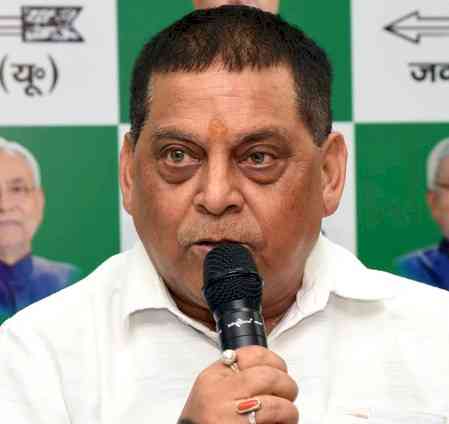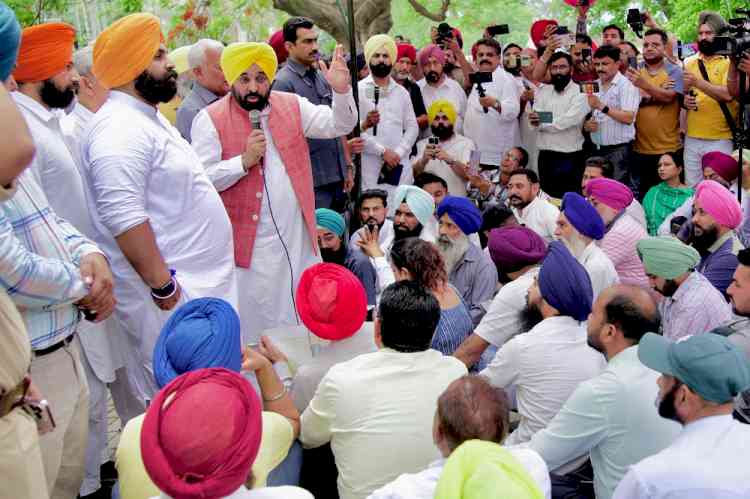Stubble burning played ‘overwhelming’ role in deteriorating air quality

Air Quality crosses all time limits – PM10 recorded 250 at AUH
station
Despite
a blanket ban on Diwali crackers this year, the air quality in Delhi and NCR
continues to degrade to the dangerous levels, recording 250 for AQI for PM 10
and a dangerously poor (above 150) for PM2.5, says Prof P B Sharma,
Vice Chancellor, Amity University Haryana.
The SAFAR (System for Air Pollution Forecasting And Research) monitoring station recorded 250 for PM10, 150 for PM2.5 and 45 for PM1 at 10am today, 31st October 2019 that too four days after Diwali. This clearly shows that it is not the Diwali crackers that play havoc with the air quality but the utter failure of the law enforcing authorities that could not stop stubble (crop residue) burning in and around Delhi NCR Region. Figure 1 depicts observed PM values at AUH monitoring station during September – October 2019.

It
may be important to note that this time of the year the meteorological
parameters such as wind speed, temperature and humidity also play a significant
role in degrading air quality from the crop residue burning that allows
particulate matter to build up and traverse great distances says, Prof PCS
Devara, Director & Head ACOAST (Amity Center for Ocean-Atmospheric Science
and Technology), Amity University Haryana who has SAFAR monitoring system at
AUH in collaboration with IITM Pune.
The
tradition of celebrating Diwali with crackers is an age-old tradition that has
never created air quality problems for thousands of years. It is the
uncontrolled Industrial and traffic pollution alongwith unmindful burning of
the crop residue in recent times that has really played havoc for the air
quality in India, especially in northern states. However this phenomenon of
pollution due to crop burning is predominant for one month 14th October
till 15th November and again in April-May after summer harvest each
year. The Pallari burning in the neighboring states of Haryana, Punjab and
Uttar Pradesh badly impacts air quality of Delhi and cities in the NCR region
making AQI (Air Quality Index) touch all time high during this period. The
trans-boundary flow of pollutants is a major concern for Delhi which requires
inter-state task force for surveillance and control of Air Quality says, Vice
Chancellor Prof Sharma.
NOAA – ERL HYSPLIT trajectory models and NASA MODIS (MODerate - resolution Imaging Spectroradiometer) satellite images also confirm massive crop burning in the Northern India (see figures 2 a,b,c for NASA MODIS satellite data for Pallari fire dots.)
The
long term solution however, lies in our ability to provide alternate innovative
technologies for neutralization of crop residues so as to attract the farmers
to earn from crop residue as also to promote rural industries for making
briquettes methanol and cardboards from crop residues says, Prof P B
Sharma.
The AUH monitoring station in its lush green campus at foot hills of Arravali monitors air pollutants, both the particulate matter as well as secondary pollutants such as NO2, CO2, CO, and also toxic gases (volatile organic compounds) like Benzene, Xylene and Toluene. Figures 3 a,b show increase in secondary pollutants during Pallari burning in October 2019. Throughout the year the air quality in the Amity University Campus remains well within the permissible limits of PM under 50 except during days of dust storms and crop burning says Dr PCS Devara, Director and Head, Air Quality Monitoring System at AUH.


AUH
has a NASA – AERONET monitoring station in its campus that further monitors
aerosol optical depth that reveals how air pollution obstructs the solar
radiation that results in growth of viruses and loss agriculture productivity.
With
a view to effectively support the National Mission of NCAP, the AUH has recently
organized an International Air Pollution Symposium that has recommended
setting-up of high-power think-tank for smart monitoring and control of air
pollution in Delhi and NCR region.


 cityairnews
cityairnews 










